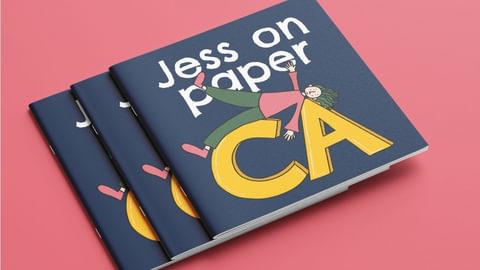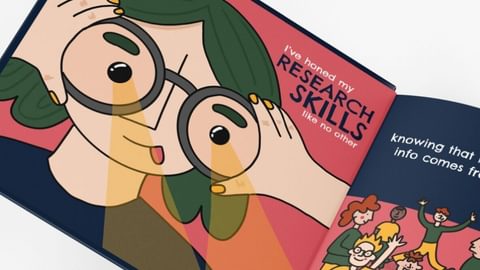NEWS ALERT - We won a SILVER IPM award for Best use of Social Media, 2025! Read more🏆

We welcomed our first three Together interns over the summer, so our creative team spent a lot of time looking through student portfolios and attending final shows. As a result, they got very good at reviewing work in the time it takes to boil the kettle, and perusing those that caught their attention over a cuppa.
Read on to find out the Together team’s advice on how to get your portfolio to stand out in the world of advertising.
For our Creative Director, Anil, his biggest pet peeve is seeing a CV or portfolio that doesn’t reflect your individuality: “If you’re a designer, you should be considering every element of your portfolio, not just the work you’re presenting…avoid using pre-made templates or a simple word doc; there should be craft in everything you do.”
Instead, take the time to make sure your portfolio design is reflective of you and your personal brand as a designer. Think about what particular skills and interests you have as an individual, and how you can show these within your work - whether that’s through an engaging tone of voice, or a surprising brand design.
Jess, our first intern, created a physical zine 'Jess on Paper' about her skills as a creative, as well as creating a traditional portfolio of work. This allowed her to showcase her illustration, storytelling, and art direction skills in an unexpected way.

Though it may be tempting to include all of your creative work, when it comes to catching attention with your portfolio, less really is more. There’s no set number on how much work to present, but generally anywhere between 5 to 10 pieces of work is a good starting point.
Pick out the pieces that work hardest and highlight your skills in the best way. Leave your viewer wanting more to increase the chances of getting a follow up email or interview where you can then showcase other pieces.
Don’t overlook the order you present your work in either. The flow will be crucial in keeping attention high and building intrigue. There’s lots of conflicting guidance on how to order your portfolio but starting and ending with your best pieces is always a good starting point.
Often the ideation and design process behind a piece is just as important as the final outcome. Showing how you reached your final design and any iterations you made along the way helps to show your thought process and your creative journey.
Whilst your overall portfolio is a quality over quantity process, don’t be afraid of showing the scamps and initial ideas that got you to your final outcome.
Whether you’re working from your own brief or showcasing previous agency work, it’s important to consider who your work is speaking to. If there was a specific target audience outlined in the brief, make it clear how you have tailored your creative execution to them.
Overlooking the messaging of your work is a common mistake to make, so take the extra time to ensure your target audience and overall message is clearly communicated throughout your campaign.
Depending on where or who you will be sharing your portfolio with, you’ll need to tailor it accordingly.
If you’re approaching a digital-focused agency, you’ll want a portfolio showing all the different areas of digital you’re skilled in. Whilst your portfolio is showcasing your work, it also needs to work for them. Ensuring your portfolio is updated for each creative you speak to also shows that you’ve done your homework about the business and what they do, showing you’re keen and have initiative.
For Gemma, our digital Creative Director, it’s not just about the work you’re showing, but how you talk about it too: "When I’m interviewing, it’s important to see there’s a passion and enthusiasm behind the work. If you’re not passionate about the projects you’re showing, that will definitely come through. So, make sure that you’re proud of the work you’re showing in an interview, and can show your interest in the industry as a whole."
If you’re fresh out of uni or simply creating your portfolio from scratch, here’s a few extra things to consider:
Write and fulfil three of your own creative briefs. This will allow you to showcase your own interests and give you more freedom if your work has previously been held back by a restrictive brief. Think about what sort of projects you enjoy working on, what skills you have, and how you can showcase them in a new and exciting way.
If you know any creatives in the field you’re interested in, ask if they have time to look over your portfolio. Most will be happy to spare half an hour to help an aspiring creative and their feedback will help to elevate your work. Don’t be afraid of criticism, if anything ask for it, as this is the best way to improve prior to sending your work out to agencies.
Whilst it’s important to make your portfolio crafted and personal to you, you don’t want to overdo it. Your portfolio should look sleek and considered, but the work inside should still be the star of the show. It’s all about finding a happy medium - where the work and creative journey is the hero, but the overall design is still aesthetically pleasing.
_____
Think your portfolio will take our fancy? We’re always on the lookout for fresh talent, so get in touch.